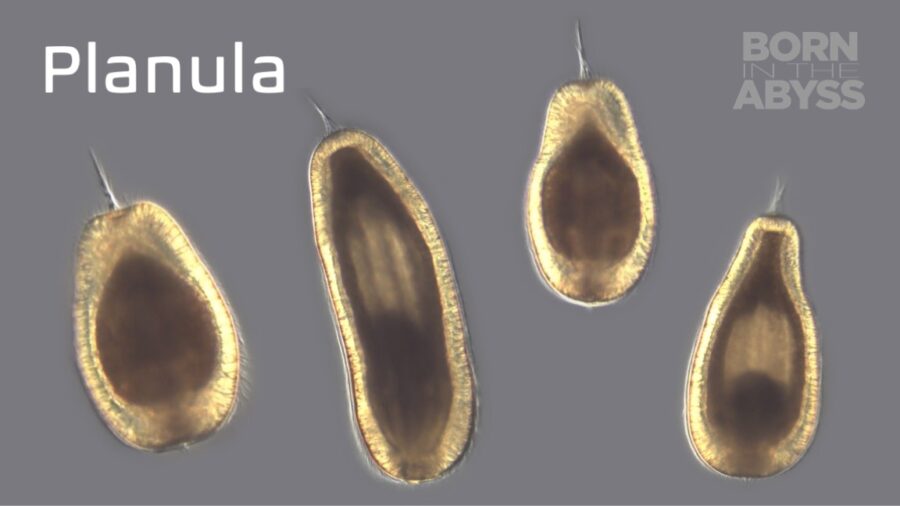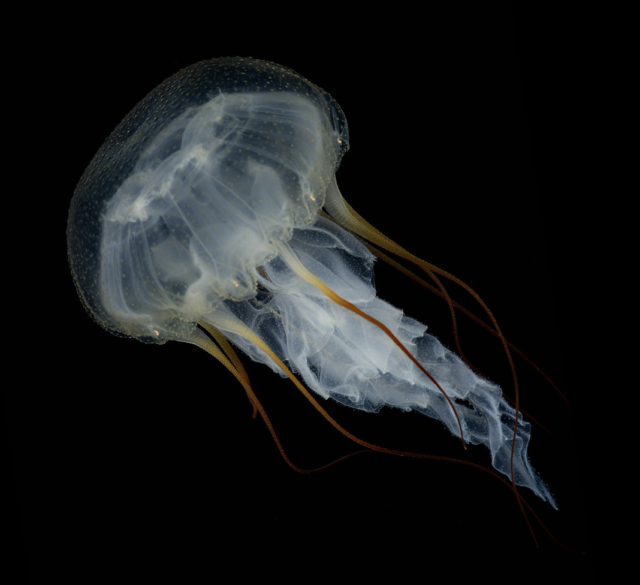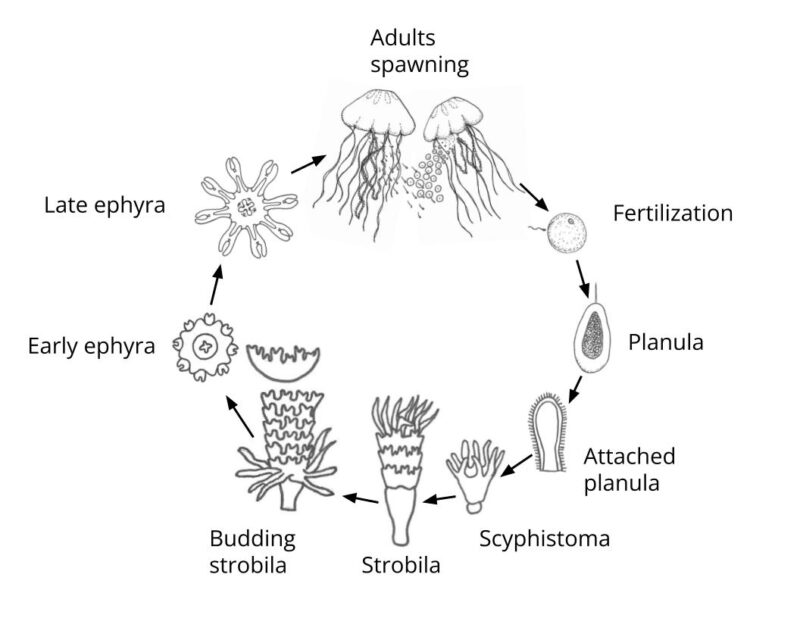
Planula
Plural: Planulae
From the Latin word "planum," which mean "flat surface"
Parents: Jellyfish, sea anemones, and coral
Food: Non-feeding; relies on yolk reserves from the egg
Size: About 500 microns tall = 0.5 millimeters = 0.02 inches

Photo of an adult jellyfish by Reyn Yoshioka
Larval Form and Function
Watch this compilation video to learn more about the movement, anatomy, feeding, and metamorphosis of the planula larva.
Life Cycle of a Jellyfish

Drawn by Nadia Stoker
- The planula larval form is only seen in jellyfish, sea anemones, and coral.
- Adults are usually either male or female, however some species are hermaphroditic.
- Eggs and sperm are spawned into the seawater where fertilization takes place.
- Planula larvae exist for days to months, generally relying on the nutrients from their egg rather than feeding. Adult jellyfish typically live for about one to five years, while adult sea anemones can live for hundreds of years. Coral colonies can live for thousands of years.
- Planula larvae of some jellyfish can sting humans just like some adults.
Larval Quest Activity
Developed by Nadia Stoker and Caitlin Plowman as outreach and education materials accompanying the Born in the Abyss film.
The Stephen Low Company
Oregon Institute of Marine Biology, University of Oregon
National Science Foundation

